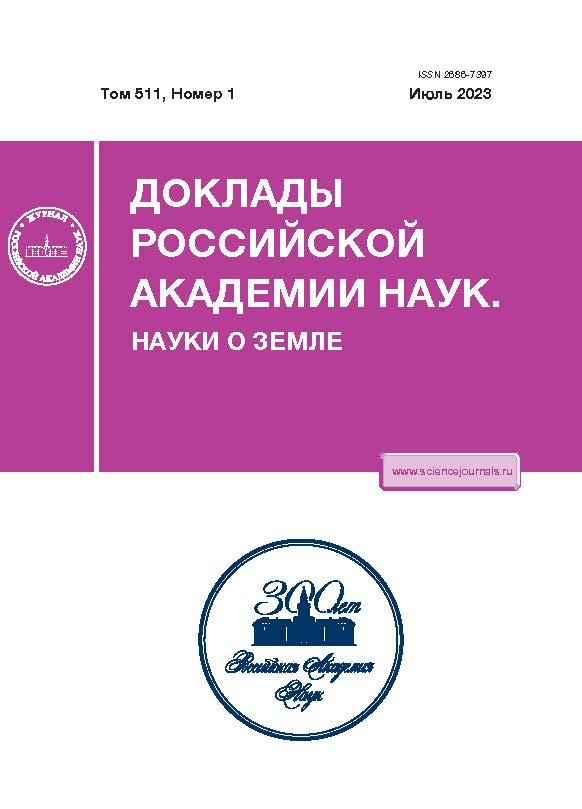EARTHQUAKES IN TURKEY 06.02.2023: MODEL OF THE RUPTURE SURFACE BASED ON SATELLITE RADAR INTERFEROMETRY
- Authors: Mikhailov V.O.1,2, Babayantz I.P.1, Volkova M.S.1, Timoshkina E.P.1, Smirnov V.B.2,1, Tikhotskiy S.A.1
-
Affiliations:
- Schmidt Institute of Physics of the Earth of the Russian Academy of Sciences
- Lomonosov Moscow State University, Faculty of Physics
- Issue: Vol 511, No 1 (2023)
- Pages: 71-77
- Section: SEISMOLOGY
- Submitted: 30.01.2025
- Published: 01.07.2023
- URL: https://edgccjournal.org/2686-7397/article/view/649873
- DOI: https://doi.org/10.31857/S2686739723600625
- EDN: https://elibrary.ru/RZSSXH
- ID: 649873
Cite item
Abstract
Satellite radar interferometry data made it possible to clearly map two faults, shear displacements along which caused catastrophic earthquakes on February 06, 2023 in Turkey. According to satellite data, the relative displacements of the sides of the East Anatolian Fault Zone (EAFZ), to which the first event with a magnitude of Mw 7.8 was associated, exceeded 5 m in the central segment. The rupture surface extends from the area of the Doğanyol-Sivris of 24.01.2020 Mw 6.7 earthquake in the north to the Mediterranean coast in the south, where the earthquake Mw 6.3 occurred on 20.02.2023. The second event of Mw 7.5 is associated with the Surgü-Çardak fault, and the relative displacements of its sides, according to satellite data, exceeded 7 m. The obtained displacement fields of the Earth’s surface were used to construct a model of the seismic rupture. The model is based on the solution [5], which defines displacements on the surface of a spherically stratified planet as a result of dip and strike displacements on a rectangular rupture located inside the sphere. Ignoring the spherical stratification of the planet leads to errors of up to 20%, especially in the presence of a large shear component [5]. Also, an error is introduced by ignoring sphericity when using the solution obtained for an elastic homogeneous half-space [6], as the US Geological Survey (USGS) did when building seismic rupture models for earthquakes in Turkey in 2023. The difference of our model is the detailed consideration of the fault geometry. For this purpose, the faults were approximated by 19 planes along the strike, divided into two levels along the dip. In the built model, shear displacements in the central segment of the EAFZ reached 12.7 m. In the southern segment of this rupture, the displacements are substantially smaller. It should be emphasized that we registered the displacements for the period from January 29 to February 10, 2023, i.e. together with coseismic ones, they also include postseismic displacements for 4 days after the main seismic events. The displacements on the rupture surface along the Surgü-Çardak fault, where an Mw 7.5 earthquake occurred, reached 10 m. The obtained results demonstrate, in particular, the efficiency of application of satellite radar interferometry in the operative study of catastrophic geodynamic phenomena and processes.
About the authors
V. O. Mikhailov
Schmidt Institute of Physics of the Earth of the Russian Academy of Sciences; Lomonosov Moscow State University, Faculty of Physics
Email: msvolkova6177@gmail.com
Russian, Moscow; Russian, Moscow
I. P. Babayantz
Schmidt Institute of Physics of the Earth of the Russian Academy of Sciences
Email: msvolkova6177@gmail.com
Russian, Moscow
M. S. Volkova
Schmidt Institute of Physics of the Earth of the Russian Academy of Sciences
Author for correspondence.
Email: msvolkova6177@gmail.com
Russian, Moscow
E. P. Timoshkina
Schmidt Institute of Physics of the Earth of the Russian Academy of Sciences
Email: msvolkova6177@gmail.com
Russian, Moscow
V. B. Smirnov
Lomonosov Moscow State University, Faculty of Physics; Schmidt Institute of Physics of the Earth of the Russian Academy of Sciences
Email: msvolkova6177@gmail.com
Russian, Moscow; Russian, Moscow
S. A. Tikhotskiy
Schmidt Institute of Physics of the Earth of the Russian Academy of Sciences
Email: msvolkova6177@gmail.com
Russian, Moscow
References
- Бачманов Д.М., Кожурин А.И., Трифонов В.Г. База данных активных разломов Евразии // Геодинамика и тектонофизика. 2017. Т. 8. № 4. С. 711‒736.
- Basili R., et al. The European Database of Seismogenic Faults (EDSF) compiled in the framework of the Project SHARE, 2013. https://doi.org/10.6092/INGV.IT-SHARE-EDSF
- Ferretti A. Satellite InSAR Data: reservoir monitoring from space (EET 9). Earthdoc. 2014. 178 p.
- Westaway R.O.B., Arger J.A.N. The Gölbaşi basin, southeastern Turkey: a complex discontinuity in a major strike-slip fault zone. Journal of the Geological Society. 1996. 153(5). 729‒744.
- Pollitz F.F. Coseismic deformation from earthquake faulting on a layered spherical Earth // Geophysical Journal International. 1996. V. 125 (1). P. 1‒14.
- Okada Y. Surface deformation due to shear and tensile faults in a half-space // BSSA. 1985. V. 75 (4). P. 1135‒ 1154.
- Михайлов В.О., Назарян А.Н., Смирнов В.Б., Диа-ман М., Шапиро Н.М., Киселева Е.А., Тихоцкий С.А., Поляков С.А., Смольянинова Е.И., Тимошкина Е.П. Совместная интерпретация данных дифференциальной спутниковой интерферометрии и GPS на примере Алтайского (Чуйского) землетрясения 27.09.2003 г. // Физика Земли. 2010. № 2. С. 3‒16.
Supplementary files














